How Marcus Ericsson Won the Indy 500
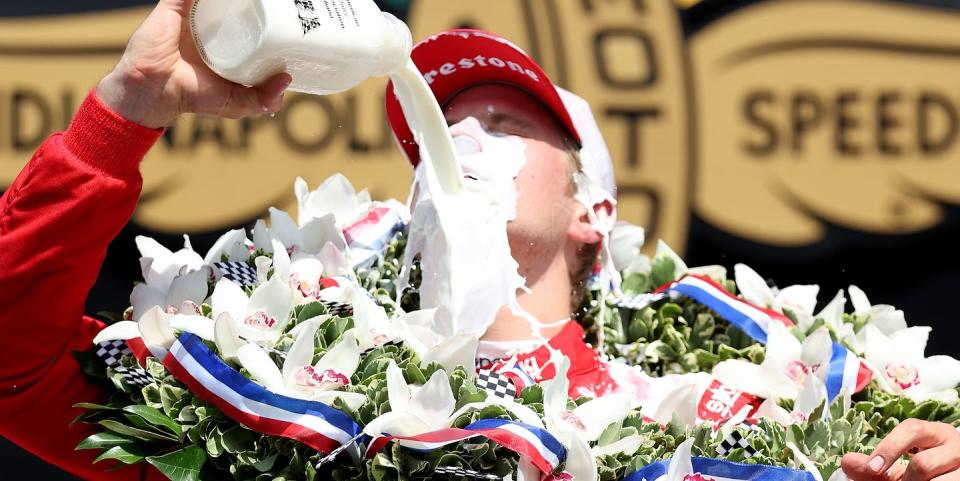
Swedish driver Marcus Ericsson joined IndyCar in 2019 after five seasons in F1 with Caterham, then Sauber/Alfa Romeo. In a series filled with heavily and justifiably hyped stars, Ericsson has flown under the radar. That changed this past weekend when he won the 106th running of the Indianapolis 500. During his Tuesday media tour of New York, Ericsson tells us how he got here.
This interview has been lightly edited for grammar and clarity.
R&T: I want to talk about your career, your whole career in IndyCar up to this moment. It's funny I think you're someone who's defied a lot of expectations to get to this point right now. And you had this quiet, slow burn, and now all of a sudden, everyone knows who you are. Can you just talk about how you evolved as a driver once you got to America?
Marcus Ericsson: Yeah. So obviously coming from F1 here to the States, it was a big change. Everything from the tracks to the cars, to the racing, to the culture. Everything was new for me and for sure, the first year was not great, I would say. Had a podium, but it was overall not fantastic. But then I moved to Chip Ganassi Racing, and got the opportunity in one of the best teams in the series.
From then on, I started to pick it up a bit and get more comfortable. And really last year was when it started to really click for me. Last year was definitely a breakthrough for me, getting my first two wins in the series and running in the top-five of the championship the whole second half, finishing sixth in points in the end. So I felt like last year was a real breakthrough, and like I established myself in the series. Then I do really feel like I've stepped it up even more this year, even before this past weekend. And I feel like I've been on a higher level this year.
Like every session, every race we've been to we've been fast and obviously the icing on the cake is winning the biggest race in the world. But I do feel like I have taken steps every year and it's been great to see that, it's been great to have the support from Chip Ganassi Racing that they believed in me and can help me reach my full potential.
R&T: Yeah. So what do you think really were the catalysts for the steps? I mean obviously going to Ganassi in the first place and just being at one of the best teams in the sport, that's enough, but were there little other moments throughout the last two years that have been, you can look back at now and be like, oh, that's when something clicked or that's when I found some speed?
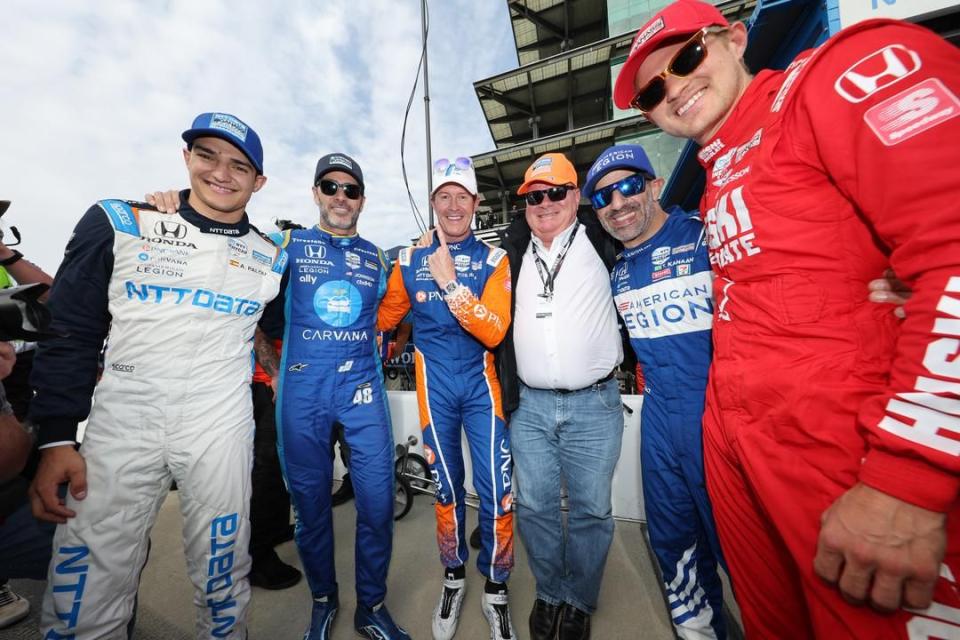
Marcus Ericsson: Yeah, there are a few things. I think one of them is that I have some of the best in the sport as teammates. Scott Dixon is a legend and maybe the best ever IndyCar driver. So to be able to work closely with him and learn from him. Alex Palou is a fantastic driver. Jimmie [Johnson] as well with all his experience and Tony Kanaan. There's so many good drivers to learn from and help you push yourself to your limits. And then I think for me coming to Ganassi, I clicked straight away with my engineer Brad Goldberg and we've been working together now, it's our third year together. And we've just worked so well together. The core group, Michael Garra on the strategy side, Angela Ashmore, the Assistant Engineer, have been the same since the start, and that really helps because we know each other so well now. That's helped me get the most out of me, and they know exactly what they need to give me on the race track for me to be at my best.
R&T: Yeah. How do you get to know them? Do you do team-building exercises or is it just week-in week-out working?
Marcus Ericsson: I mean, I live in Indy so I go and visit or go into the shop quite a lot and I always try and spend time with the people I work with. It's always been my way of doing things because for me, racing is so much a team effort, and a team sport. You need to have everyone in your team behind you and I've put a lot of time into that and getting to know the people I work with. And that's why winning the Indianapolis 500 was, yeah, I drove the car over the line, but it was everyone that was part of that #8 car crew. And the whole Chip Ganassi Racing team was part of that. I couldn't have done it without anyone in that group.
R&T: I think it was Dario [Franchitti, the retired three-time Indy 500 winner who still works with Chip Ganassi] who said in the media, 'You have no idea how hard Marcus works at all of this stuff.'
Marcus Ericsson: I don't like to see someone working harder than me. I put so much effort in and I want to always try and become better, always try and learn. And I think that's how I came to IndyCar. I feel like every year I've been getting better and better and better because I have more experience and I try to learn from my mistakes. Whatever happens, I just try to learn from it and become better. I think the key in my career, especially here in the States, is learning from all the things I've done. It's helped me become a better driver and get to the point where I can win the biggest race in the world.
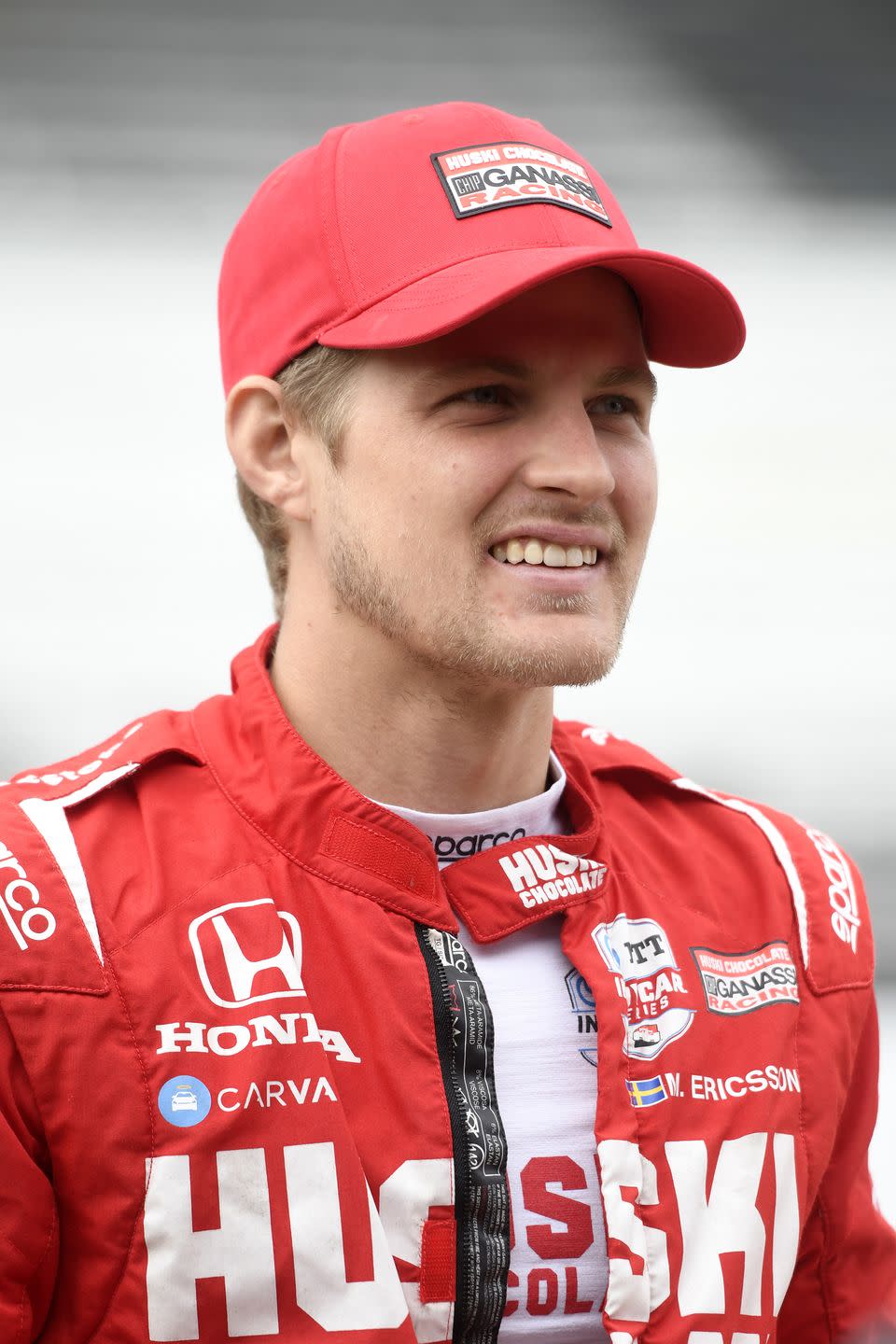
R&T: I think it also speaks to how great IndyCar is that you can come here and that you can be the difference maker. Whereas in F1, obviously, it's so much dependent on the car. But here, a great driver and a great team can make things happen. It must be really thrilling for you coming out of that world where you have to fight so hard for every little scrap you can get to being here and being like, 'Yeah, I can win races. I can win the Indy 500.'
Marcus Ericsson: It was one of the big reasons why I wanted to come to IndyCar in the first place. Like you said, driving in Formula One is fantastic. It's the biggest racing series in the world. You go to some amazing places. And I really enjoyed my time there, but it is extremely frustrating when you feel like, as a driver you're getting better, but the results are the same, or even worse sometimes, because you're not in a car that can get good results.
So that was really cool coming to IndyCar and, like you said, as a driver, you can make a big difference, but also that driver and team combination is what makes the difference. I love that and that challenge and that way of doing things, and love the fact that everyone that wakes up on race day has a shot of winning that race. Like every single one of the drivers out there can win the race if they're having their day.
R&T: It's racing as it should be.
Marcus Ericsson: Exactly. And that's why I think so many drivers are starting to come to IndyCar now because they're realizing that F1 is so tough to get to, and also to be competitive. And they see guys like me, like [Romain] Grosjean and other people coming here to the States doing IndyCar and having so much fun and winning races and running up front. It's a cool series to be part of for sure.
R&T: I know that when you came here, one of the big attractions was the ovals, and it's funny because a lot of people who are joining the IndyCar series don't want, or are a little hesitant about doing ovals at first. Can you talk about why you wanted to do ovals, and more specifically the 500, from the outset?
Marcus Ericsson: It's funny. Like you say, a lot of people seem to come here and they're like, oh, 'I wish there were no ovals because I don't want to do them,' but I was the opposite. I always, even in my F1 career and in Europe, I always looked at the 500 and ovals and I thought, 'I really want to do that.' I really thought it would suit me because all my career, I've loved tracks that have a lot of high speed corners. And I was always thinking 'Ovals are basically just high-speed corners. So it's like, I must be like, that's made for me. Right?'
So I really wanted to try it. And from the first year here, I really enjoyed it, but I also learned quickly how difficult it is to race on an oval. It's one thing to be fast, but it's a very different thing to be strong and race well on an oval, because it's such a different mentality. You need to work your car during your race and pit sequences are very difficult. There's so many things that go into oval racing that you don't really understand from the outside. And that was really interesting to learn.
R&T: It seems like you figured it out. And is that credit to just the whole team and the fact that you can talk to Dario or Dixon or all these people who've had so much success on ovals?
Marcus Ericsson: For sure. I had the best teachers available and resources. I tried to use that as much as possible, talking to Dario and Scott and TK and just trying to feed off everything I could from them and watching a lot of onboards from Scott and TK and seeing how they race. That's been a massive resource for me to speed up the process.
This off-season, me and my engineer Brad put in a lot of work to try and improve our oval performance. Last year we finished sixth in the championship and we were running up front, but it was clear that our weakness was the ovals. That's where we lost the most points compared to Palou, who won the championship. So a big area of focus for this year was to improve the ovals. We get to Texas, the first oval of the year, and finish on the podium. Great. It was like, boom, confidence. The work we put in is paying off. Went into the month of May with that confidence. And just from the get go, we were fast. We were in contention and I knew on race day we had a car that could win it.
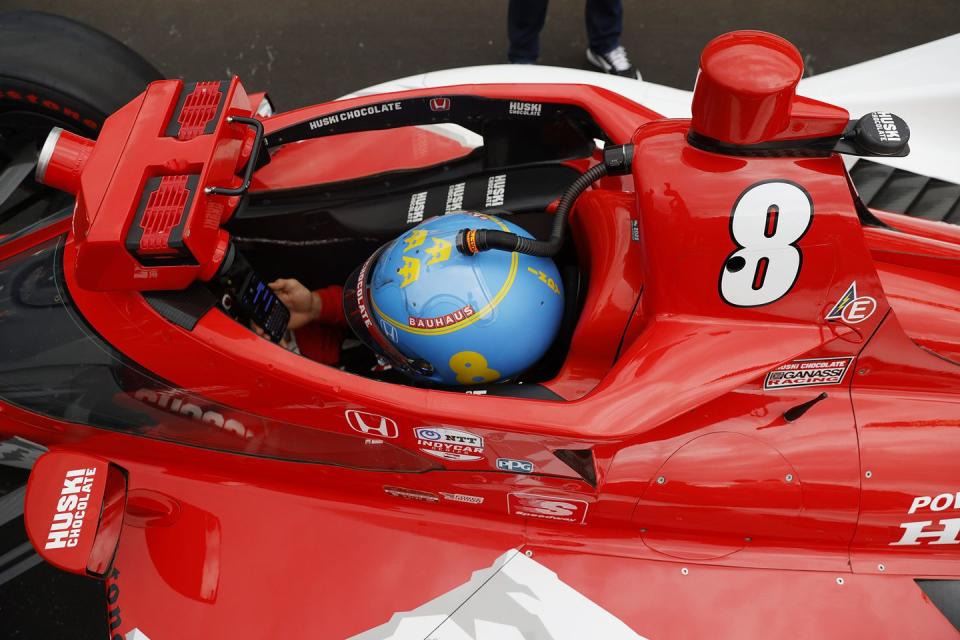
R&T: Was that the first day you knew? Or did you go into the month of May knowing that, "Oh, this is possible. This is my best shot yet.'
Marcus Ericsson: I felt in the open test in April 'Oh, our cars are hooked up. Like we are fast.' And then I felt already on day one of the month of May we were straight away on pace, all five of us and the car felt so good. I was like, 'This is going to be a good month.'
That and also confidence I got personally from the Texas podium was something that I really brought with me into the month.
R&T:Yeah. Suddenly it's 'I'm an oval racer. I can do this.'
Marcus Ericsson: Yeah. But that's the thing, you know. It's one thing to be fast, but to deliver in [the Texas] race, that really helped me feel strong.
The beginning of the 2022 Indy 500 saw Ericsson's Ganassi teammates Palou and Dixon trading the lead to save fuel. Misfortune struck Palou when on lap 67/200, he crossed the pit commit line just as a yellow flag came out, meaning he had to roll through the pits, then run a slow lap before pitting again for fuel and tires.
While Conor Daly and Pato O'Ward led some laps throughout the race, Dixon seemed in control of things, until he locked up all four tires on pit entry on lap 175. This resulted in a drive-through penalty, cycling down the order and leaving Ericsson as the lead Ganassi car.
R&T: When I went back and watched the highlights, it's so funny because you're just there the whole time. You're right up front the whole time. And no one on the broadcast or on the radio was talking about you, but you were just there. So I guess once Dixon had his drive-through, then it was like, 'I can really go for it now.' Or, I assume you were probably going to mount an attack on the final laps anyhow, just because you knew you had the car to do it.
Marcus Ericsson: That was the thing, you know, it's funny. Like I said, it's my fourth year now and I've built up experience and I've been studying a lot of oval racing. I watched a lot of Indy 500s to try and understand the race even more. Going into this race, I had a really good qualifying weekend. Qualified fifth, perfect place to start. I had a very clear plan going into the race. The plan was to run in the top-five for the first 150 laps. Run there, protect my race car, take care of my tires, do the fuel numbers, do good pit sequences, in and out laps. Just controlling that and just waiting for the last 50 laps. And when I got there, if I was in the top three, four, or five, I knew I had the car to win. I was following that plan exactly.
It was funny because in the end, you see the interview with the McLaren guys and they were like, they were shocked that we came from nowhere. But like you said, we were there all the time. Just waiting. That second to last stint, second half of that stint, I just started to unleash the potential of the car and we started to go really fast.
Then, that last pit sequence was very crucial. I saved some fuel, so I could go some laps longer than the guys around me. That jumped me up to P4, and then after Dixon's penalty, I was P3. Then it was just all-out, try and go for it. We passed the McLaren cars and Kanaan in a couple of laps and took off, so we definitely had the pace for it. Obviously that red flag in the end made it a bit tougher than I expected.
Ericsson's teammate, NASCAR legend and Indy 500 rookie Jimmie Johnson, crashed on lap 194. IndyCar red-flagged the race to clean up the debris and to give fans a green-flag finished.
R&T: Have you ever been more stressed in your life?
Marcus Ericsson: I was freaking out when that red came out. I was like, I couldn't believe it because I had the race won.
R&T: You were three seconds ahead.
Marcus Ericsson: I was controlling that gap. There was no way they were going to catch me at that point. I was just counting down the laps and the car felt so good. And I was just praying in the car, like whatever happens, there's no caution, no caution. And then, five to go, boom, yellow, caution. I couldn't believe it. I knew how hard it was to defend the lead on a restart because every restart all day, the leader got passed. And I knew Pato [O'Ward, the McLaren driver running in second] had good straight-line speed. So I was like, 'This is going to be so hard to defend.'
I was freaking out on the radio, I was angry about it, and then Mike and Brad, my strategist and engineer, came on the radio and said 'It's your day, just do your thing. It helped me calm down and get into the zone again. Then I just tried to figure out a plan, and I executed it how I wanted. It was super tight, but it was just enough to pull it off.
R&T: What'd you feel when Pato was around the outside in turn one? Because it looked like for a moment he had a run and you just covered it off. Then you had that wild defense on the back straight.
Marcus Ericsson: Yeah. It was so close when he came there on the outside and if he'd been a little bit further ahead, he would've turned down. It was such small margins, but I was not going to lift. And I was keeping my foot down. The things you got to do to win the biggest race. Right? In a way it was cool because I had to win it two times, you know?
R&T: You feel like you really earned it at that point.
Marcus Ericsson: That's the thing, I felt that finish was so intense, and it was so incredible to be able to pull it off. Now, I'm even more proud that it happened and I had that finish. But obviously, when [the red flag came], it was the last thing I wanted.
R&T: In the moment, you just want to cruise to win.
Marcus Ericsson: Exactly. But now looking back at it, it couldn't have been a better ending, so I am very proud of that.
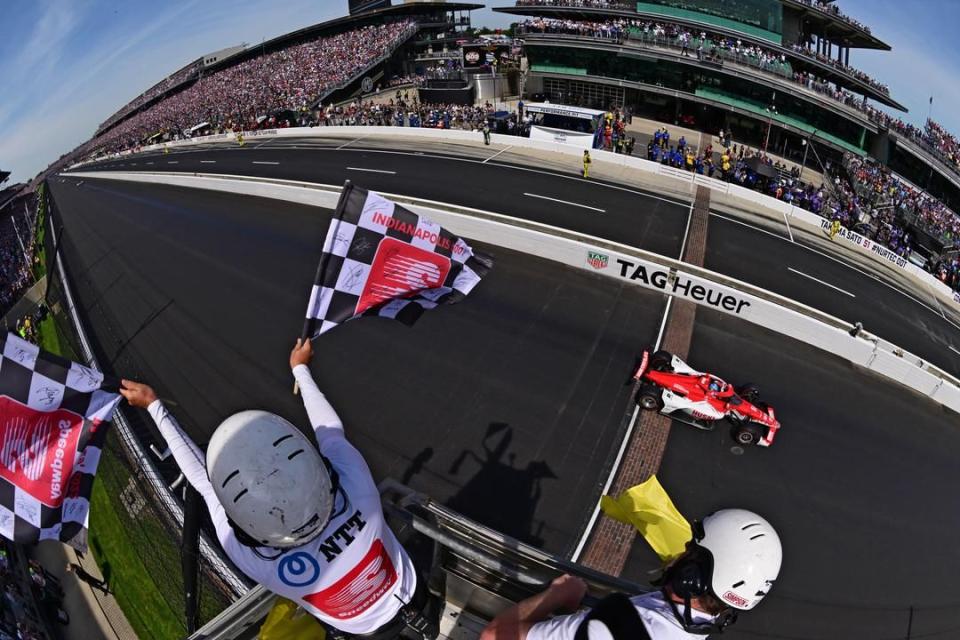
R&T: When you talk about planning and everything, is that always how you've been as a racer? Do you always map out what's going on laps ahead and just try to execute it as best as you can?
Marcus Ericsson: Yeah. I think that's the type of driver I am. I'm a very analytical driver. I'm thinking a lot and trying to be a step ahead of what's happening. It really paid off for me this last weekend.
R&T: Absolutely. And where'd you get that weaving defense from?
Marcus Ericsson: I think it was [Juan Pablo] Montoya that did it first in like '15. And then I think Simon [Pagenaud] was really the one that perfected it in '19. I watched the ending of that race so many times in the last month, because I was preparing myself for a similar situation. That was why, when I was sitting there, I had those pictures in my head. I talked about that with Dario, and all those things prepared me for a moment like that. I just try to use all that knowledge and all that memory to try and try and do the same, but I'd never done it before. I was all free-styling, but it was enough. It worked pretty well.
R&T: What other 500s did you watch over?
Marcus Ericsson: I watched mainly last year's and 2020 as well. And Simon's because, for me, that's when the cars are the most similar to where we are at now. But I did watch quite a few of the highlights from earlier years as well as the 2000s, just to see you still get some ideas there and you can always pick up some things.
R&T: It also speaks to how good the car was. That you had the power, but you also had the balance to be able to put it exactly where you want it.
Marcus Ericsson: For sure. The car was hooked up all month. And especially at the end of that race, the car was so good. Honda came out again with a really good package and all that power we had in the end, that's what got us to the checkered flag first.
R&T: Yeah. It must have been really satisfying when you turned the engine map up.
Marcus Ericsson: We were full on attack there in the end and then that was very important to have all that power for sure. It gave Honda its third win in a row in the Speedway. It was very special.
R&T: All the Ganassi cars were rocket ships. So how's it been since winning? Obviously your life is forever different now.
Marcus Ericsson: It's been crazy. From the checkered flag, my schedule has been completely full-on for every minute. I had like two hours of sleep Sunday, three hours of sleep last night and I've almost no voice left. But I'm enjoying every moment of it. Yeah, it's just... I'm still struggling to realize that I actually won. I think I still haven't been able to sit down and take a breath and actually think about it.
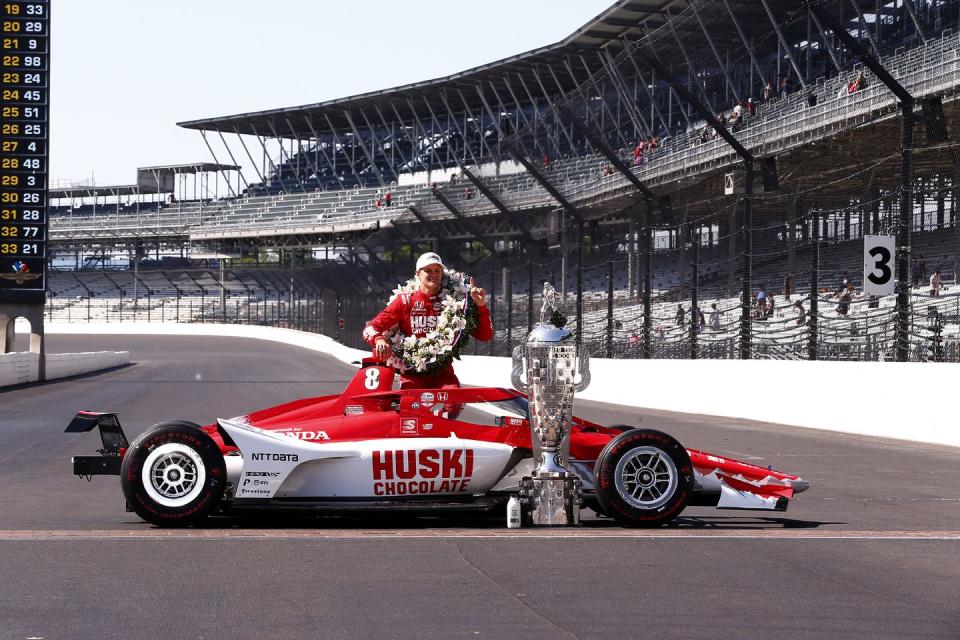
R&T: And you probably won't until after Detroit.
Marcus Ericsson: No, probably not.
R&T: Or maybe after the season. Now you've also got a season to go and win because now you're in such a good position for the rest of the year.
Marcus Ericsson: Yeah, it's really exciting. Obviously, the 500 is our biggest race but, like you said, I have a championship now to try and win. We're leading it going into Detroit and I've had a really good season. Even before the 500, I was P8 for points going into the weekend. At Long Beach, I was running in P3 with less than 20 to go when I spun out and hit the wall. With those 30 points that I threw away there and then, I could have P3 in the championship going into this past weekend. That shows that we've been really strong this year. We've been really fast. So I just need to keep going, keep running up front, winning some more races. And then we should be there to fight for the championship all the way to the end.
R&T: It'll be a lot of work though.
Marcus Ericsson: It'll be a lot of work, a lot of hard competition out there, a lot of good drivers in cars, but I have the best team behind me and if there is anyone who can do it that's the Chip Ganassi Racing organization. So I'm feeling very confident and excited to try and do it.
You Might Also Like

 Yahoo Autos
Yahoo Autos 